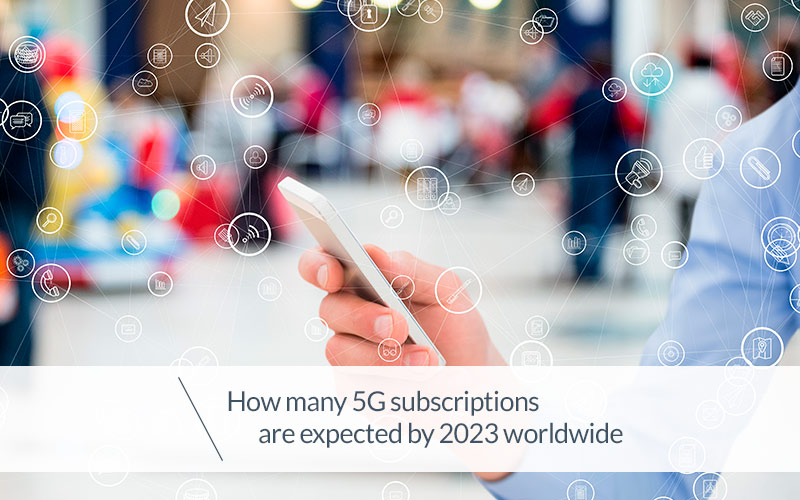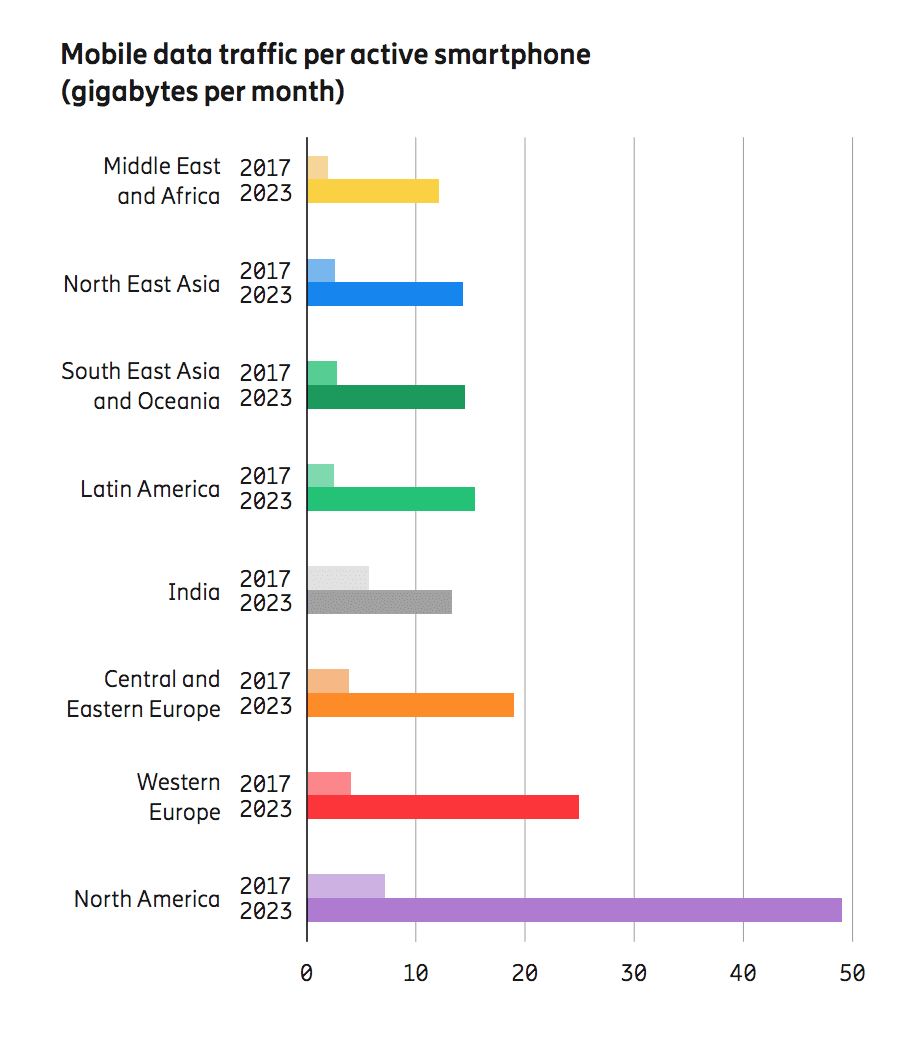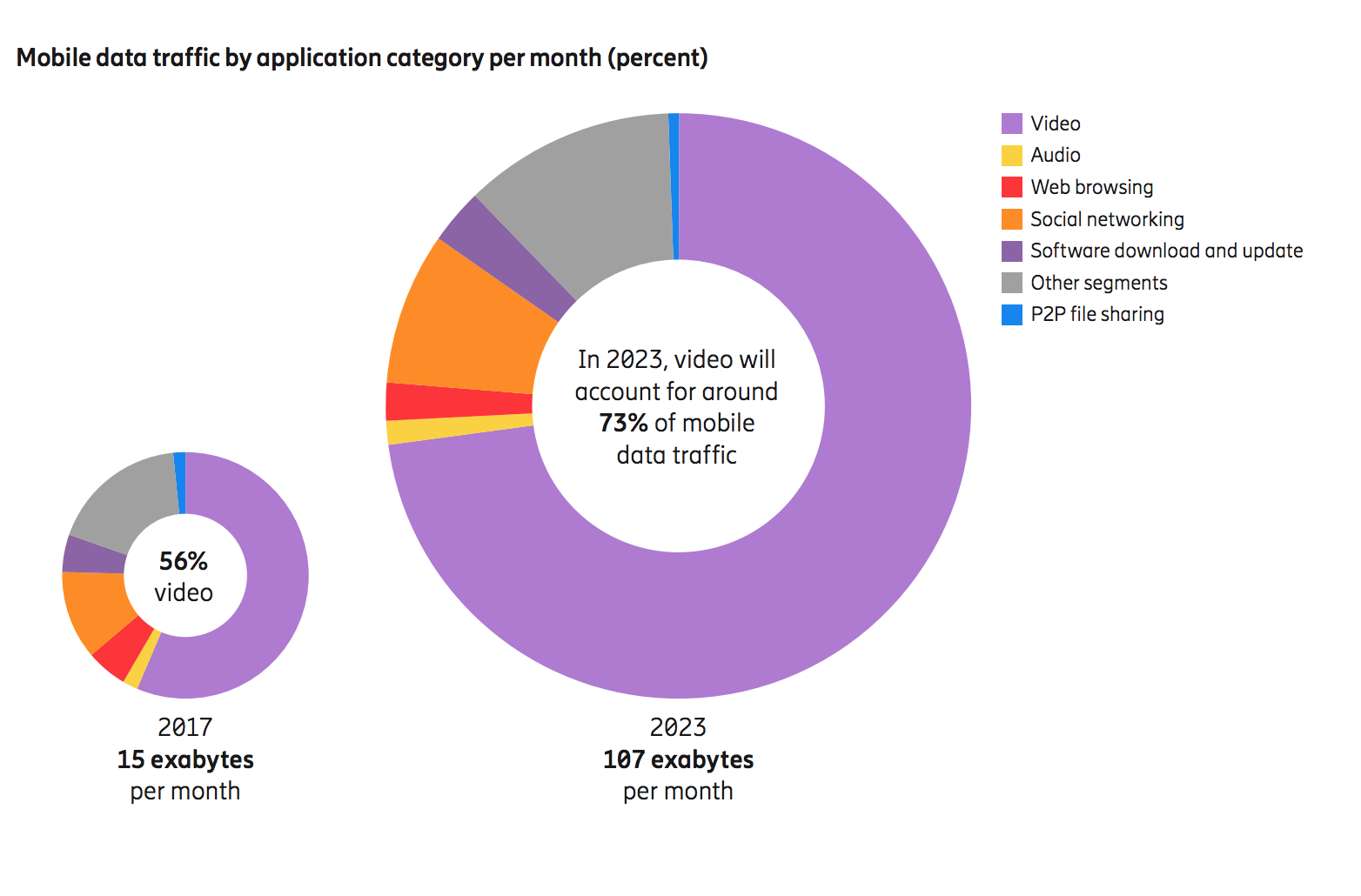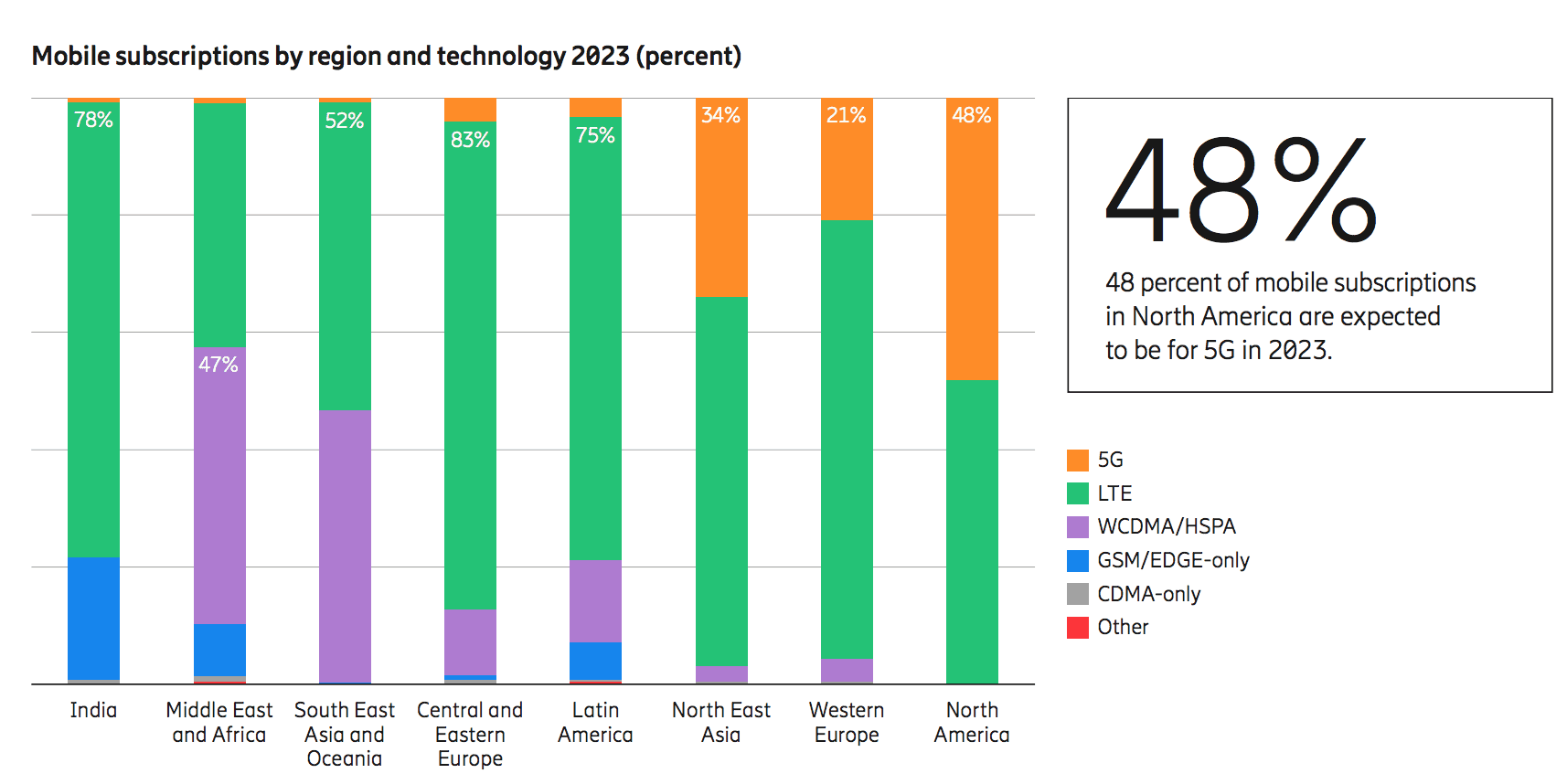
Mobile data traffic exceeded voice data traffic for the very first time in 2009, highlighting the an initial milestone for the telecommunications sector. But that is just the beginning of what will be a difficult challenge.
Data collected by Ericsson show us how mobile data traffic volumes on smartphones across the world will rise sharply over the next few years, calling for some kind of necessary intervention.

Video and audio data, software downloads, streaming, social networks, browser usage, file sharing etc. all consume an increasing amount of data.

Developing new technologies able to improve the quality and speed of mobile data elaboration is certainly not an easy task. It requires mobile operators and indeed mobile device manufacturers to unite forces.
Nine years have gone by since 2009, but only now in 2018 have the very first attempts been made at creating a 5G network with IoT functions.
In order the reach the numbers we outline here, there is still a whole lot to do.
1 billion 5G connections by 2013
In June 2018 Ericsson published a report entitled “Ericsson Mobility Report”, which contains some very interesting data relative to the telecommunications market and, in particular, regarding the development of 5G networks.
We have already written an article on this subject, building upon the data contained in the report written by GSMA Intelligence, “The 5G era: Age of boundless connectivity and intelligent automation”, which forecasts 1.1 billion 5G connections by 2025.
This figure is apparently confirmed by Ericsson too, who do however bring forward the date for reaching 1 billion registered users for the 5G service by two years (2023), with the following regional distribution.

The highest usage, as is easily predictable, will come from North America, followed by the Asian countries and western Europe.
We still have a long way to go
That may seem an immense number, but it literally represents just 20% of global mobile traffic, simply proving that we will still have a long road ahead of us.
The launch of third-generation chipsets will further motivate 5G usage, which will be available from 2020.
In the meantime, telephone operators are obliged to update current 4G networks with the latest technology, to cope with the increase in traffic volumes and improve client experience.



